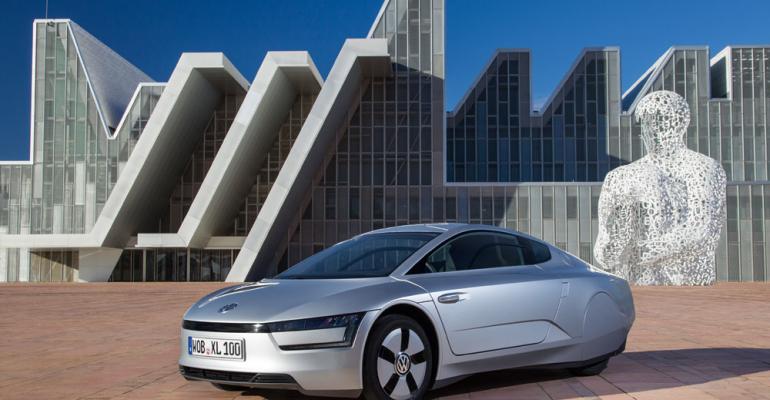VALBONNE, France – Volkswagen’s planned unveiling of its XL1 plug-in hybrid at the Geneva auto show next week will mark the culmination of Chairman Ferdinand Piech’s decade-long quest to deliver a practical 235-mpg (1-L/100 km) car to the market.
Whether the XL1 serves as the 75-year-old Piech’s parting shot to the auto industry remains unclear. But if he is thinking about retirement, the man who doesn’t appear to know the meaning of “it can’t be done” can take that step knowing it is mission accomplished once again.
The all-new, superlight and aerodynamic XL1 is slated for limited production (1,000 units per year) at the auto maker’s Osnabruck, Germany, plant, onetime home to the famous VW Karmann-Ghia.
Piech was still a young man when, as technical director at Porsche, he took motor racing by storm with his Porsche 917/10 that obscured Ferrari at Le Mans with its flat-12 engine, later adding turbocharging to produce up to 1,200 hp.
Since then, he arguably has evolved into an engineering talent even more creative and visionary than his grandfather and Porsche’s founder, Ferdinand Porsche.
Through the past decade, Piech also has proven to be a sharp manager, selecting with laser-driven acumen an executive team that has put VW Group on one of the industry’s fastest growth tracks in terms of model range, production volume, market demand and profitability.
His commitment to create a road car with more than 1,000 hp, after VW bought the Bugatti brand in 1998 took some time to achieve, but eventually he fulfilled the commitment when the EB 16.4 Veyron coupe was delivered in 2005.
The amazingly compact Veyron, with its 1,001-hp turbocharged 8L W16 engine and top speed above 249 mph (400 km/h), introduced an unprecedented chapter in the history of street-legal cars and remains the most expensive production model on the market.
This year, Bugatti will be challenged by strong rivals with Formula 1 credentials, namely Ferrari and McLaren. But they are late in coming, and Piech already is on the move in the opposite direction with the XL1.
The VW chairman first envisioned the so-called 1L car at the dawn of the new millennium, setting a goal of bringing to market a production car that could achieve such fuel economy but remain practical for everyday use.
The XL1 brings makes that dream a reality.
Much like the Veyron, the XL1 has an extremely low drag coefficient, at 0.189, helping the 2-seater to achieve 261 mpg (0.9 L/100 km) while emitting only 21 g/km of carbon dioxide.
Its slick carbon-fiber-reinforced polymer body,weighing just 1,753 lbs. (795 kg), and low profile allow the XL1 to cruise at a constant speed of 62 mph (100 km/h) using just 8.3 hp. In all-electric mode, the car can cover more than a half mile (1 km) on just 0.1 hp, VW says.
Thanks to its plug-in hybrid system, the XL1 can travel up to 31 miles (50 km) in all-electric mode through a 27-hp electric motor and 7-speed DSG transmission. Energy comes from a pack of lithium-ion cells.
In addition, the XL1 is equipped with a small, 47-hp 2-cyl. turbodiesel. The power package has the potential to achieve a top speed of 99 mph (160 km/h).
The XL1 measures 153.1 ins. (388.8 cm) long, 65.6 ins. (166.5 cm) wide and 45.4 ins. (115.3 cm) high.





